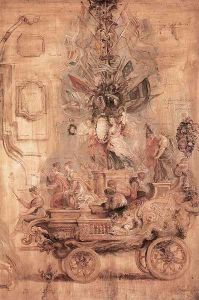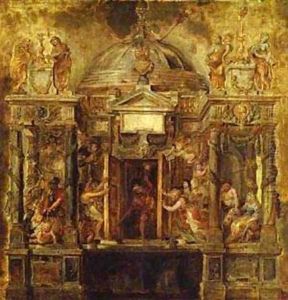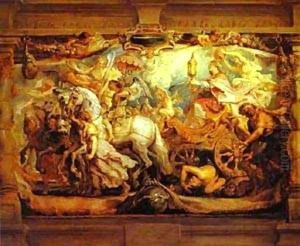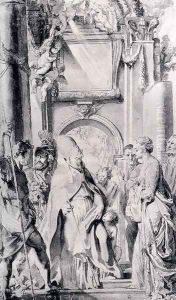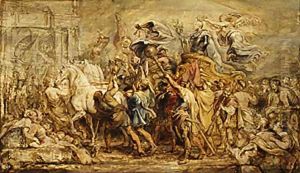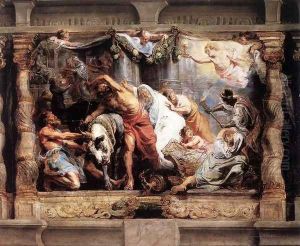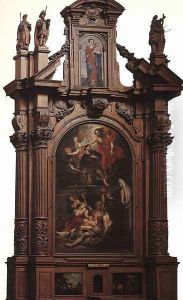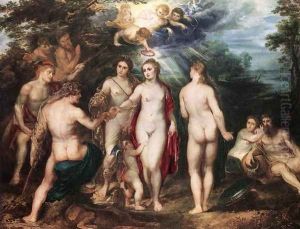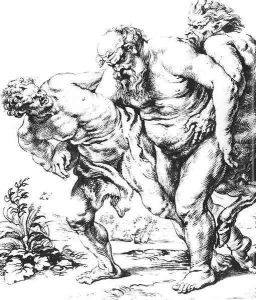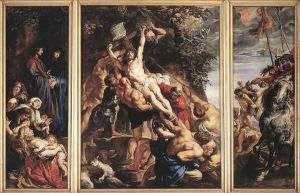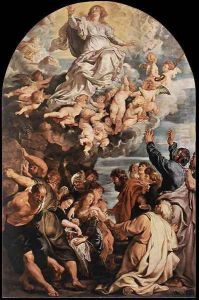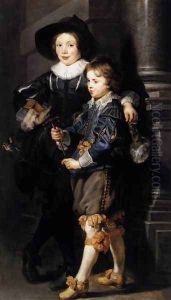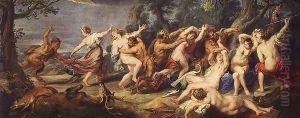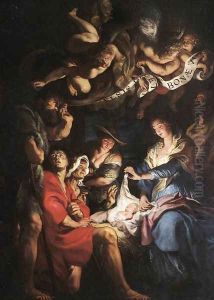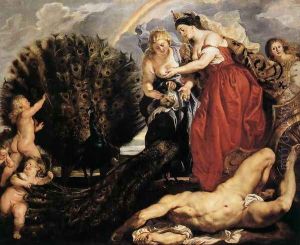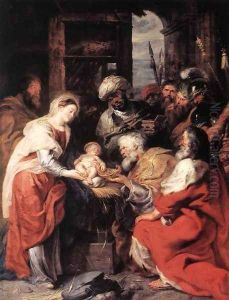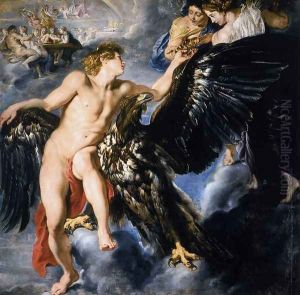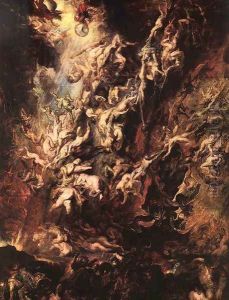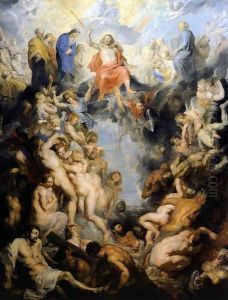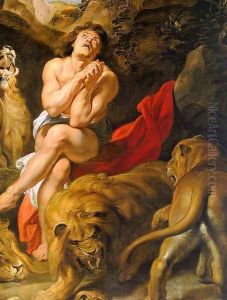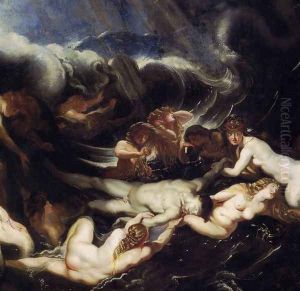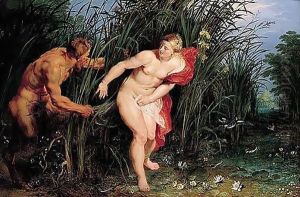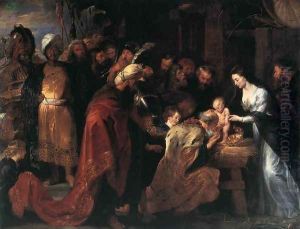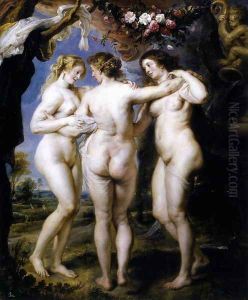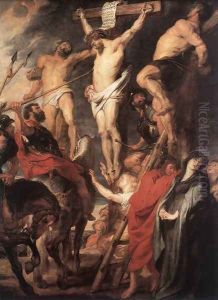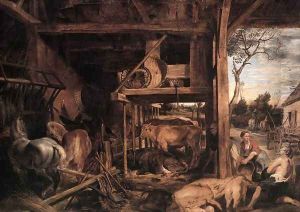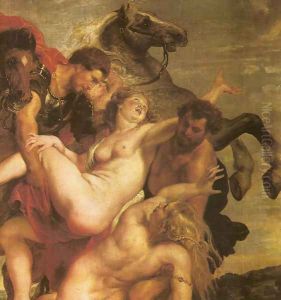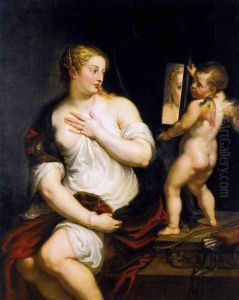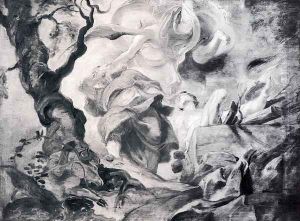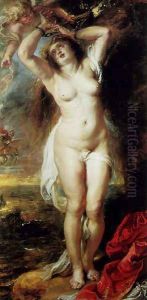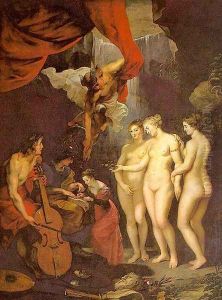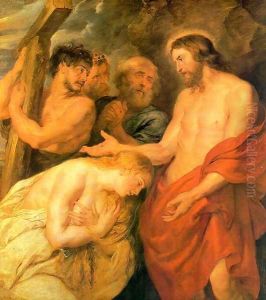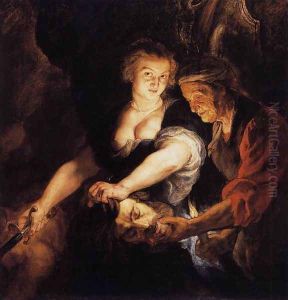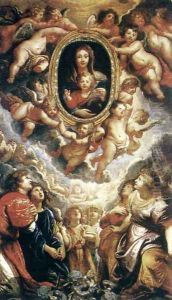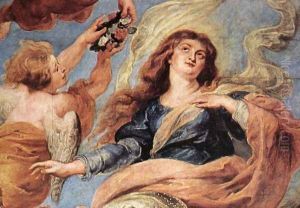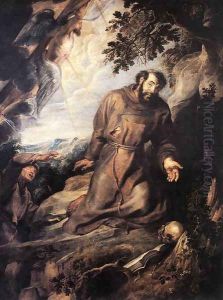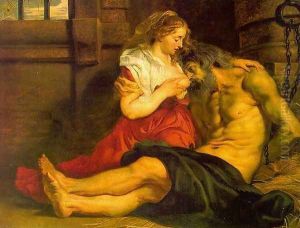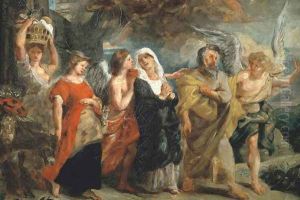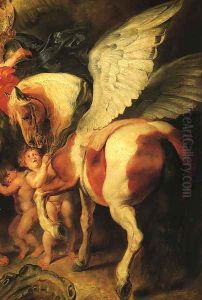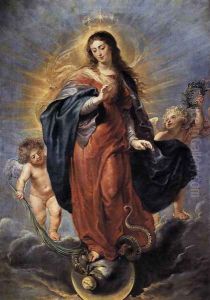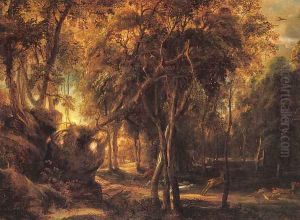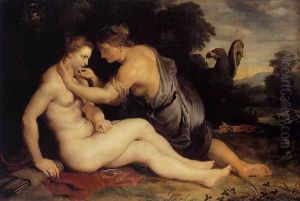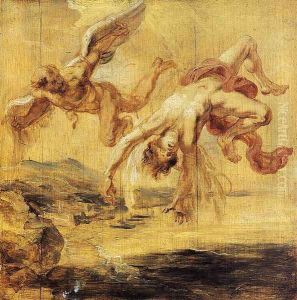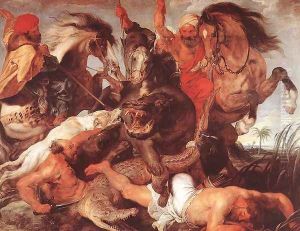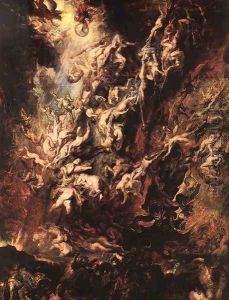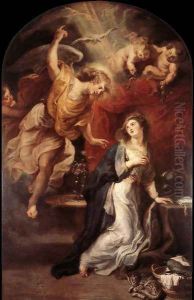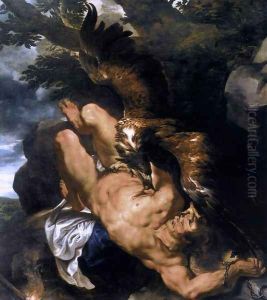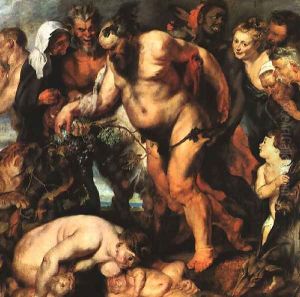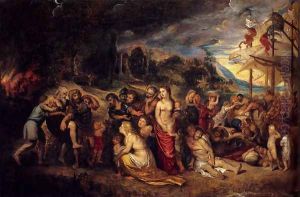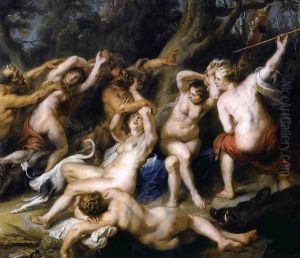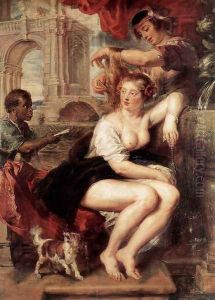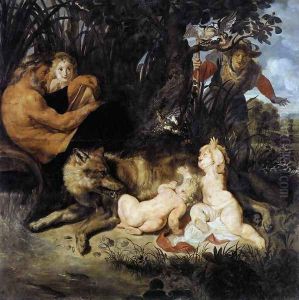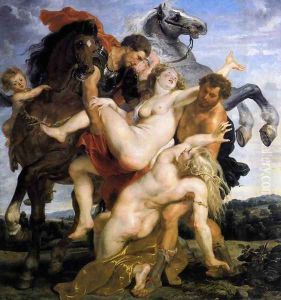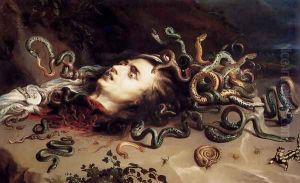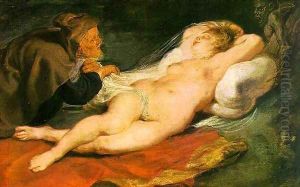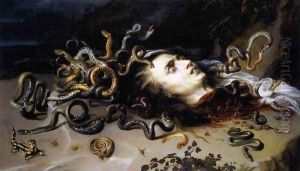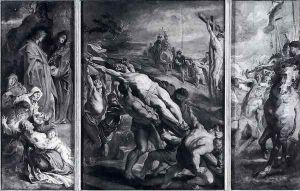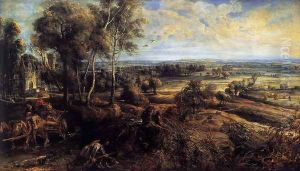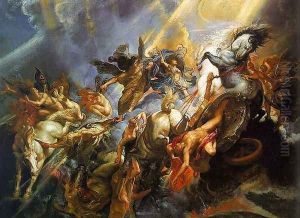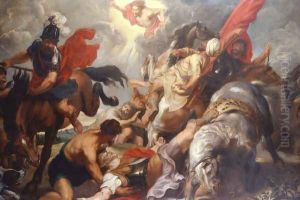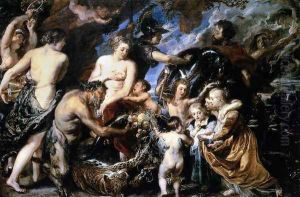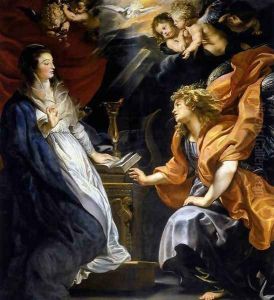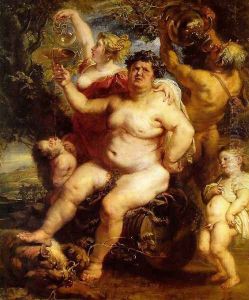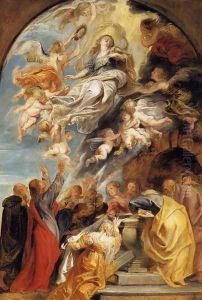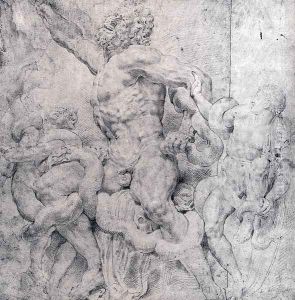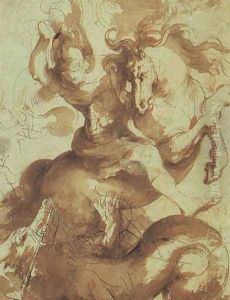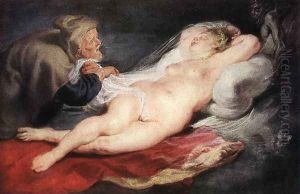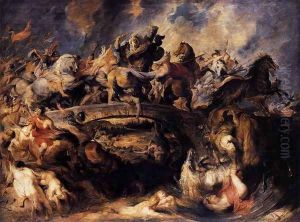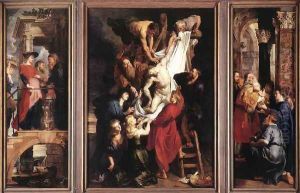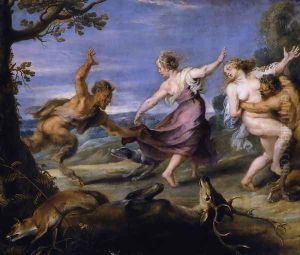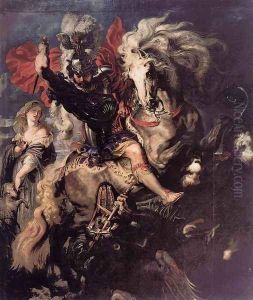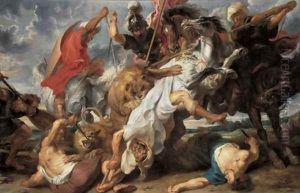Peter Paul Rubens Paintings
Peter Paul Rubens was a prolific 17th-century Flemish artist known for his vibrant and dramatic Baroque style. He was born on June 28, 1577, in Siegen, Nassau-Dillenburg (now Germany) to Jan Rubens and Maria Pypelincks. His father, a lawyer, had fled to Germany to escape religious persecution in Antwerp. After his father's death, Rubens' mother returned the family to Antwerp in 1589, where Rubens was raised in the Catholic faith.
Rubens received a classical education and then apprenticed under several leading Antwerp painters. In 1598, he was admitted to the Guild of St. Luke as an independent master. In 1600, Rubens traveled to Italy, where he was heavily influenced by the works of Italian masters like Caravaggio, Titian, and Michelangelo. He worked in several Italian cities and was appointed court painter by the Duke of Mantua, Vincenzo I Gonzaga.
Rubens returned to Antwerp in 1608 after receiving news of his mother's illness. By this time, he had developed a reputation as a distinguished artist. In Antwerp, he continued to receive prestigious commissions, including from the city's churches and from the court of the Archduke Albert and Archduchess Isabella. In 1609, he was appointed as court painter to the Habsburg rulers of the Spanish Netherlands.
His style, characterized by dynamic compositions, lush color palettes, and a masterful portrayal of movement and human anatomy, became highly sought after. Rubens ran a large studio in Antwerp that produced paintings for local and international clients, including royalty and nobility across Europe. He often collaborated with other artists and was known for his diplomatic skills, which he used during missions between Spain and England.
Some of Rubens' most famous works include 'The Descent from the Cross,' 'The Adoration of the Magi,' and 'The Massacre of the Innocents.' His work had a lasting impact on the Baroque period and influenced generations of artists, including Van Dyck, who was one of his most prominent pupils.
Aside from his artistic endeavors, Rubens was a scholar, diplomat, and knighted by both Philip IV of Spain and Charles I of England. He married twice, first to Isabella Brant and, after her death, to Hélène Fourment, who inspired some of his later works.
Peter Paul Rubens died on May 30, 1640, in Antwerp. His legacy is preserved in the vast body of work that epitomizes the exuberance and grandeur of the Baroque style. Today, his paintings are held in high regard and can be found in major museums and collections around the world.
